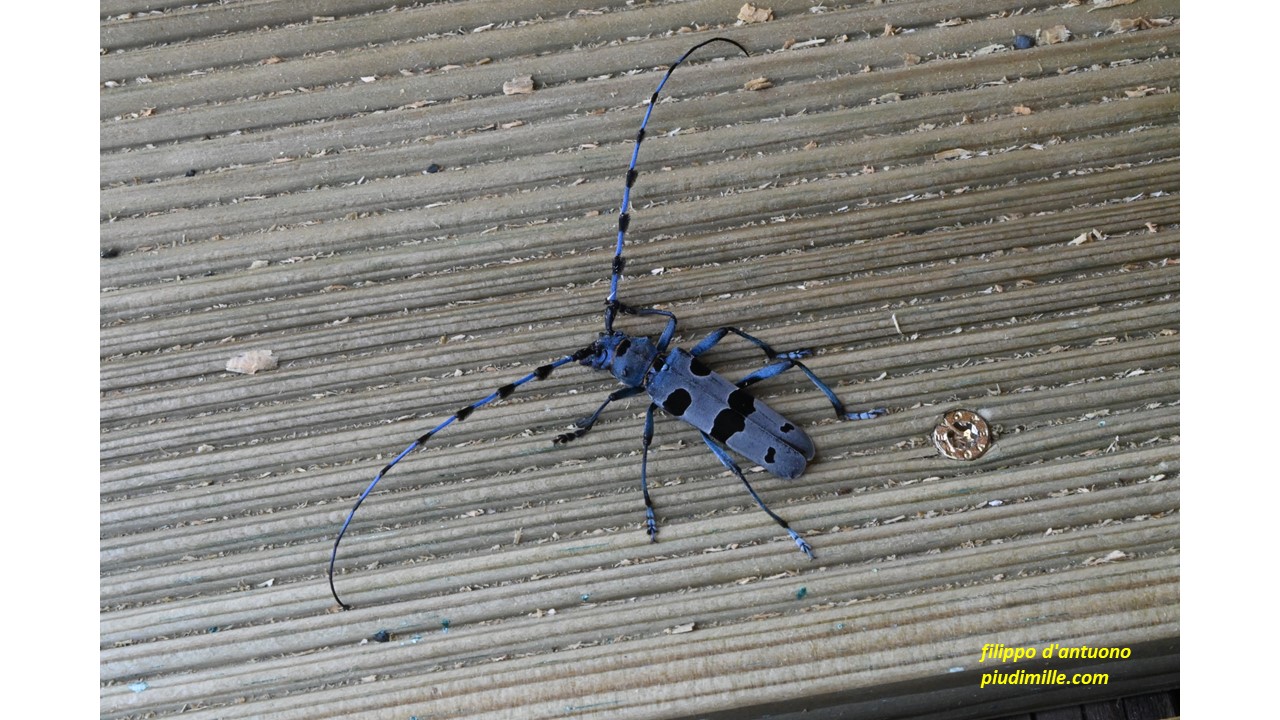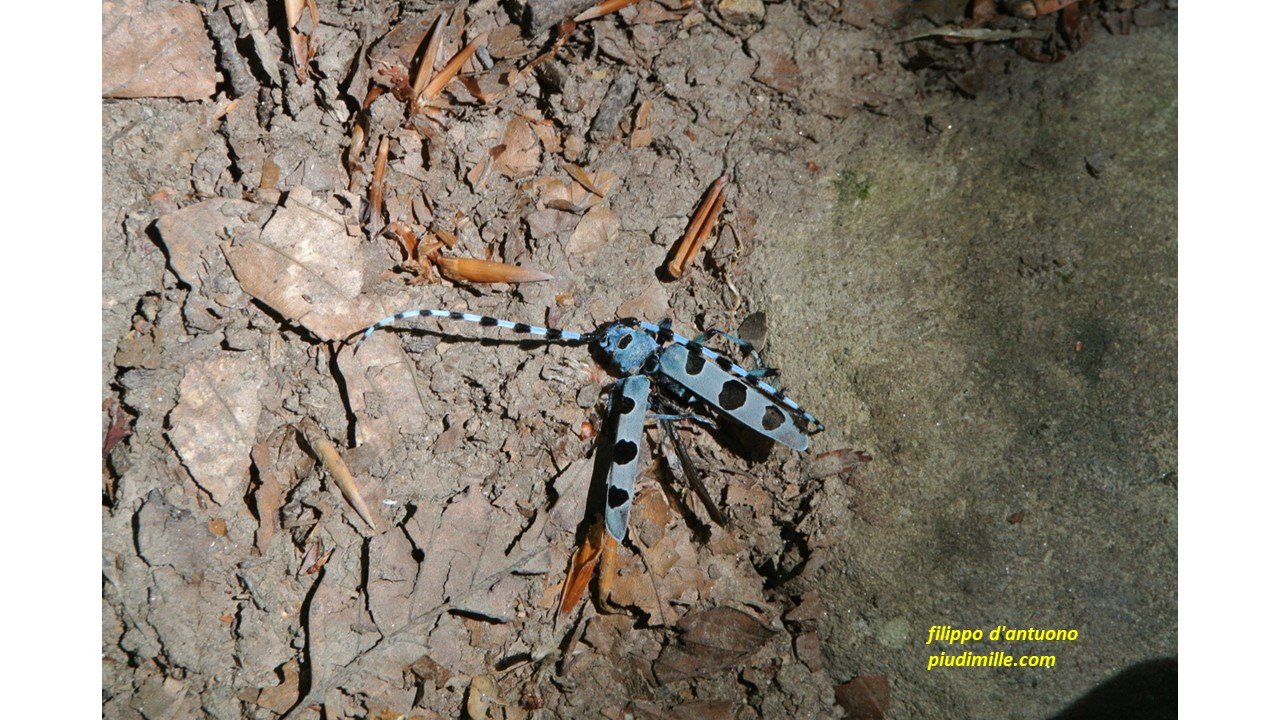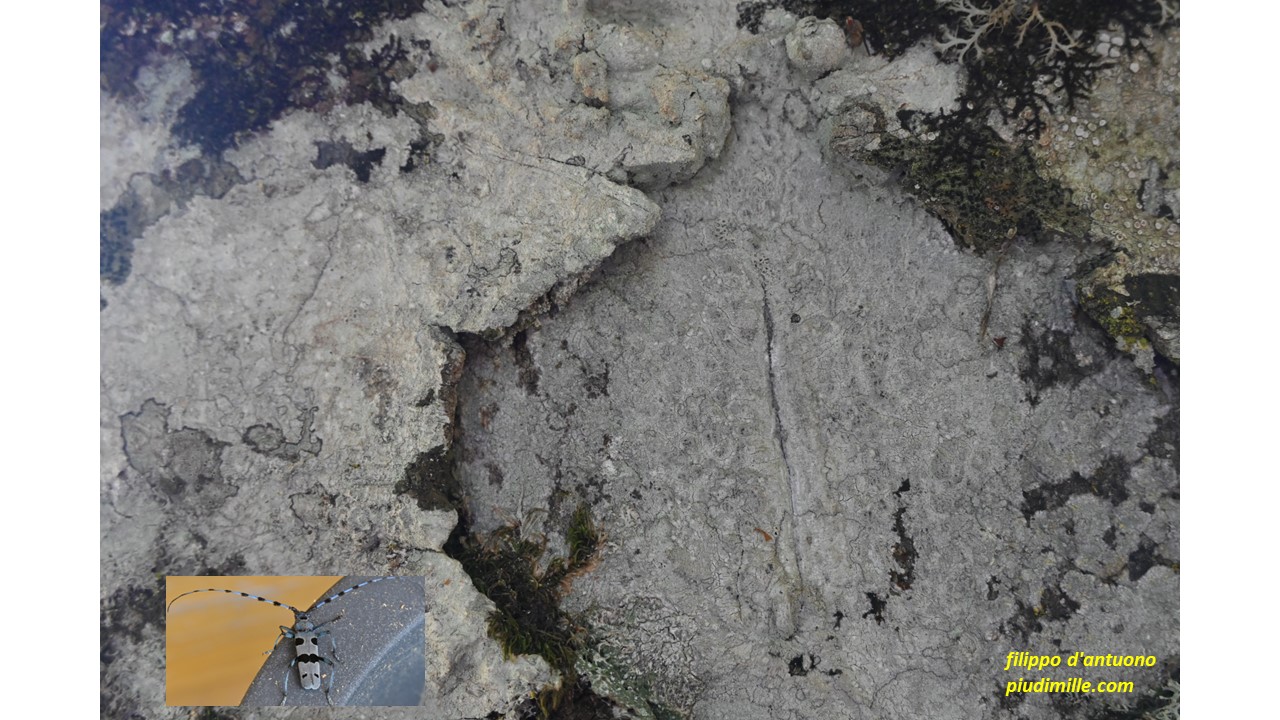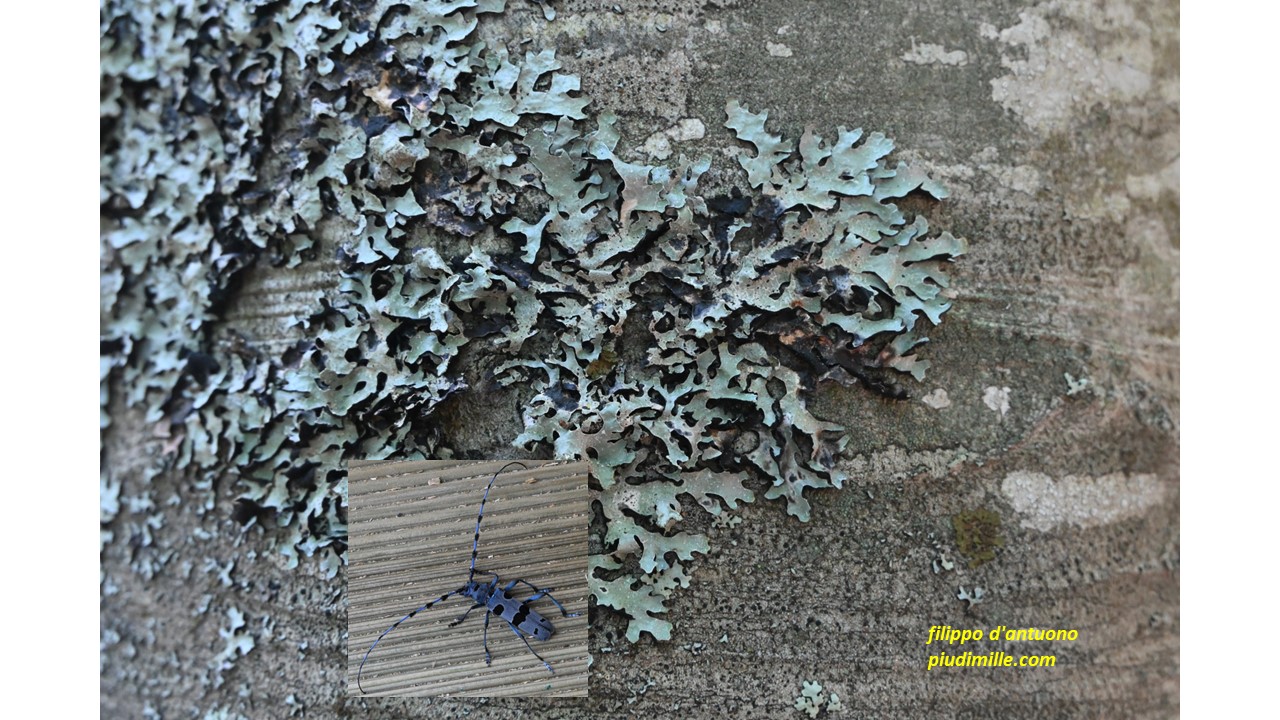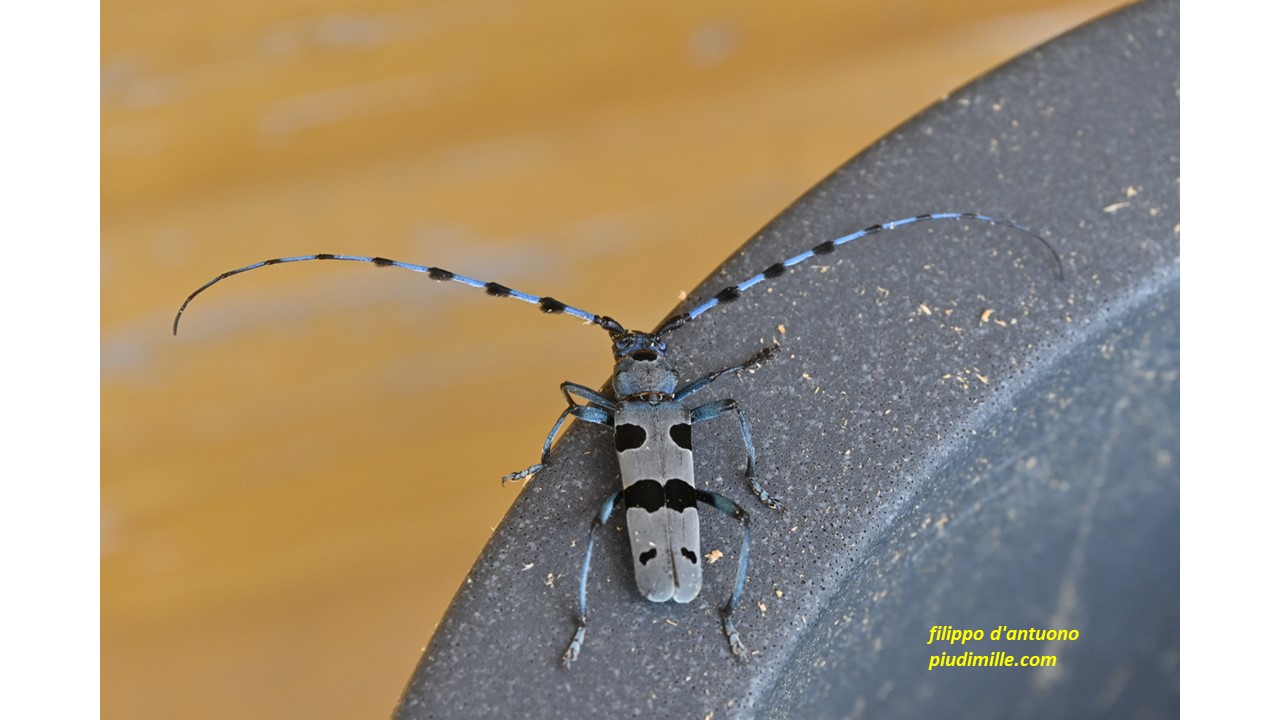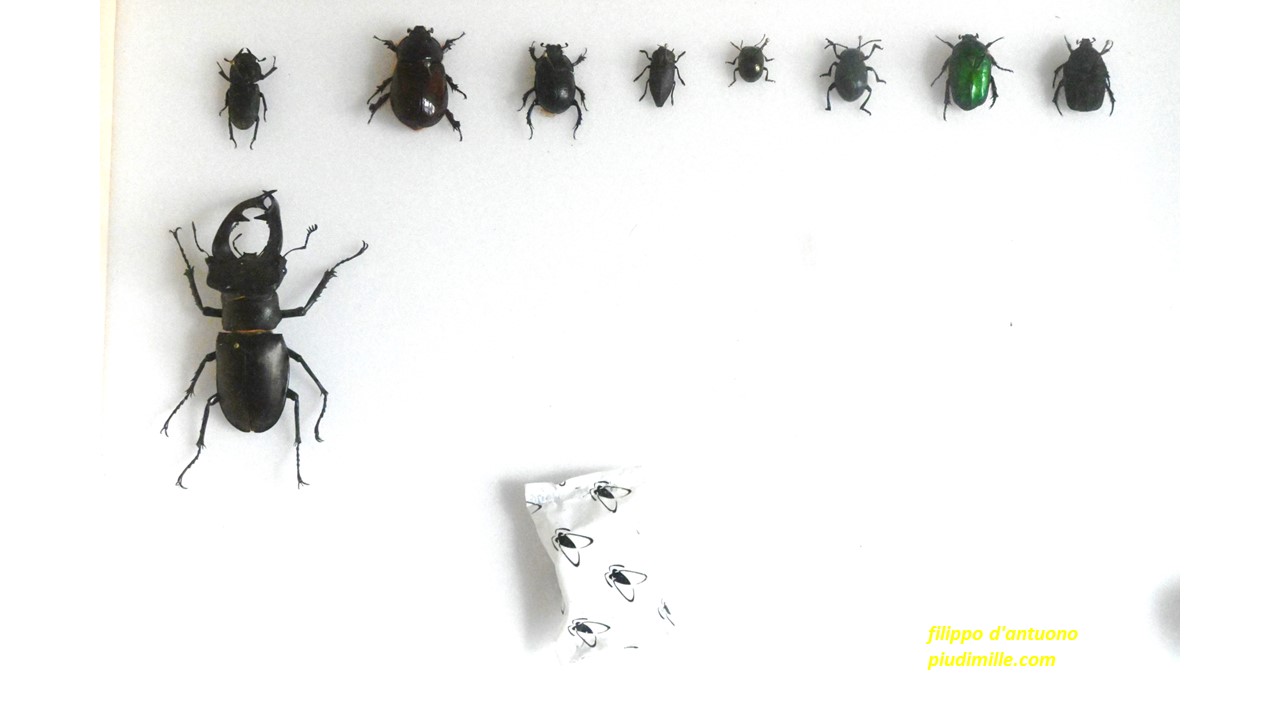About the colour of Rosalia alpina
Non scientific considerations, inspired by an encounter with a Rosalia alpina, evolutionism and creationism
July 13th, 2023
It happened, finally . Few days ago I meet it alive, for the first time, in Ligonchio: mythical Rosalia alpina; up to now I found only some remains of it, as it could be seen in a photo, taken in the Alpe della Luna range, few years ago.
The enthusiasm for the encounter was great, and I should have immediately communicated it, as appropriate for good social network public relations. But, after all, I had a communication with the insect (see it below) and I preferred to keep it for me; I did not have the right inspiration and it is not possible to be all the time on Facebook. So I told myself: “I’ll do, if an occasion will come”.
And now it came, but I will not write about the Rosalia alpina in a neutral an scientific way: for this, there is plenty of information on line, besides usual Wikipedia.
During these days I wandered among beech forest, observing trunks and barks. And, suddenly, the image Rosalia alpina materialised, generating the question of the title. Well, it is rather an answer than a question, given the astonishing mimicry; even if, her majesty Rosalia still has to allow me the privilege of showing in its natural environment. But then, since I had time to freely elucubrate, I started thinking.
Well, thinking that pure chance, and evolution could have determined such a convergence between the Rosalia alpina and beech bark may seem astonishing. To undermine also the more convinced evolutionists.
It could be almost easier to think about an enjoyment of an imaginative creator. But, in this case, the question may arise of which came first: the Rosalia or the beech ? Like the egg and chicken question. Mmm, almost more complicated than evolution.
But let’s come back to it, the Rosalia alpina, after this digression that it inspired me. When I met it (it was a male, as you can see form the long antennae), it was slowly walking at the margin of a kind of garbage tray, signalled by a friend. It let me take many pictures, also posing for me. It was very slow, so I though it could be at the end of its life cycle; but the season was still early, indeed. So I thought that it could be just broken out its nymphal stage and was still getting acquainted to its new being.
Despite some feeling between me and it was clearly established, it was not enough for me, to be sure. I considered that, when theya re so slow, if at end of cycle, they do not last long. And I asked it: “Could I put at the bottom of the tray: I will be back before leaving. If you will not be there, it will mean that you are alive and in good shape, otherwise, who knows… It seemed to me to hear from it: “go ahead”.
When I came back, it was gone.
I confess, a couple of year ago I re-started to collect Coleoptera. But only the ones I find already dead. Finding dead but intact insects is extremely difficult, so the progress of my collection is very slow… For the time being, no Rosalia alpina, that was clearly well alive and in good shape and, perhaps, understood my thoughts.

